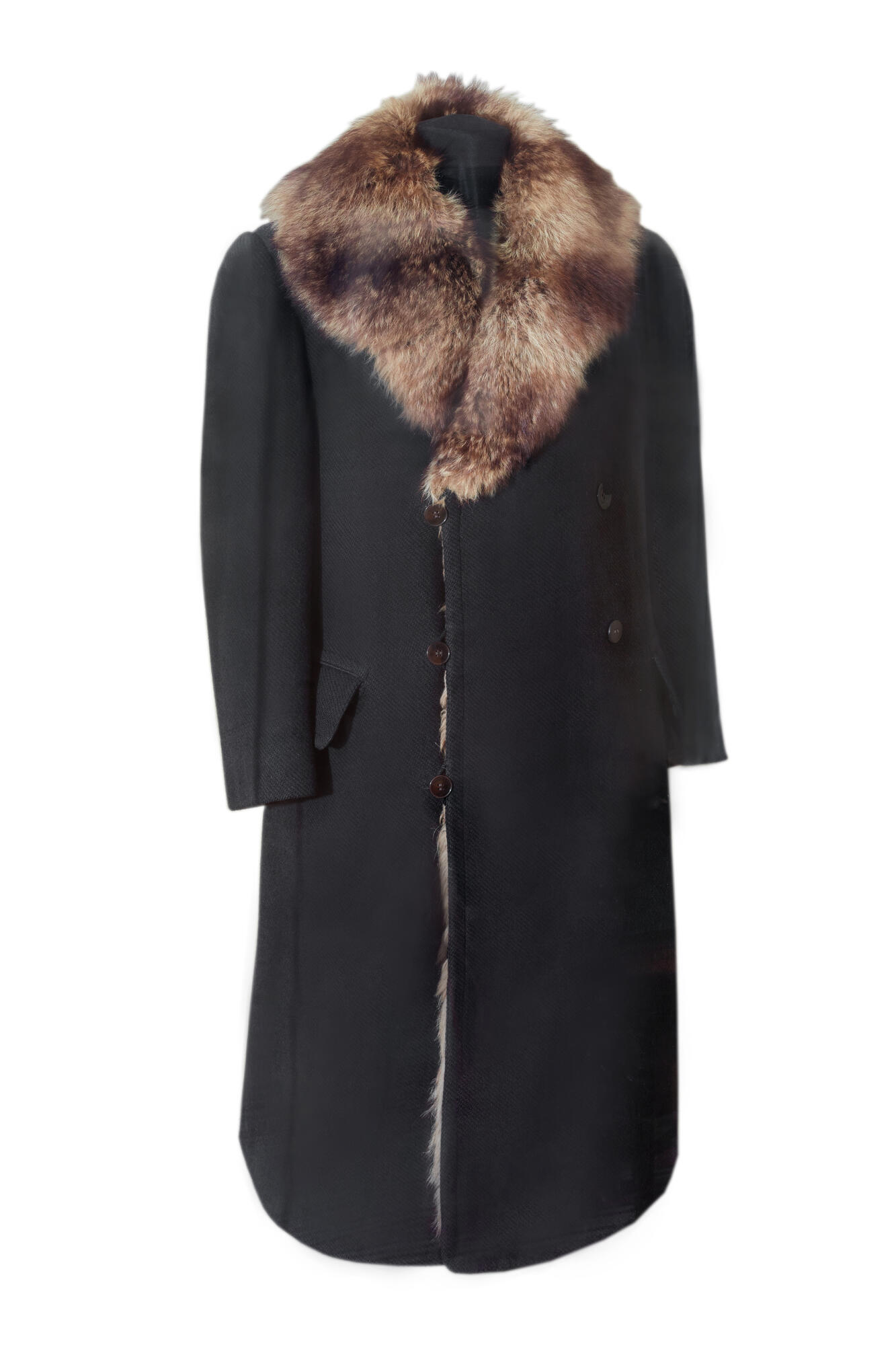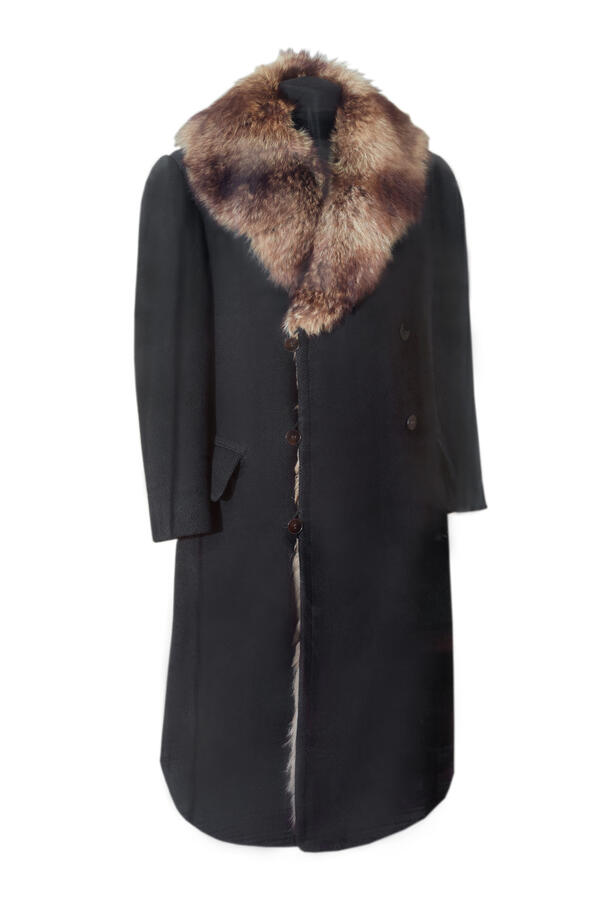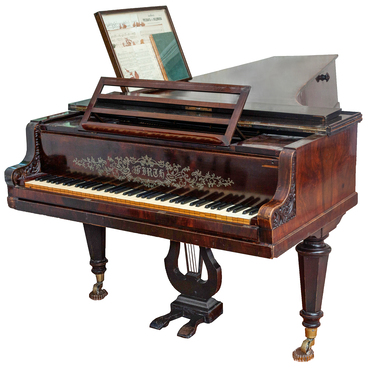which during Ulyanov’s lifetime served as a reception room in front of his study. After Ilya Nikolayevich’s death, his coat changed several owners, including its occasional wearer Vladimir Lenin.
Dmitry Ulyanov’s son Victor recalled: “The raccoon fur coat hung in the closet in the hallway of Lenin’s apartment in the Kremlin in the years after Lenin’s death.” In 1956 Olga Ulyanov, Dmitry’s daughter gave it to the Moscow Central Lenin Museum.
Moscow furrier Nikolay Safronov examined the fur coat at the museum, and his certificate stated ”…the fur coat is draped, with the fur of pre-revolutionary tailoring, sewn by hand. Fur — raccoon. The furrier’s company seal available on the back skin has in the center of the coat of arms the royal crown and the oval seal signature: “M. I. Odnoushevskaya with sons.” The coat was repaired, as there are new stitches on the fur with other (black) threads. Not a furrier, but a tailor repaired the fur apparently. Perhaps the fur was changed. The top is made of the drape cloth. (Made in Lodz). The sewing of the top also pre-revolutionary…”
A furrier differed from a tailor in that he sewed and repaired things made of leather and fur. Tailors worked with different kinds of fabrics.
Between the drape cloth and fur, unknown artisans sewed a lining with a thin layer of woolen cotton. In addition, the coat has two slit side pockets with patch flaps.
Men’s winter coats before the revolution were usually sewn with fur on the inside. The fur on the outside was worn only as a joke at Christmas parties. Older men preferred fox and raccoon fur coats, collars of black karakul, beaver, raccoon. In the provinces products made of bear or wolf fur were especially popular.
Since fur coats were very heavy, they were worn mainly on long journeys, and for walking they preferred bekesha — coats with fur lining.
This coat entered the Ulyanovsk House-Museum in January 1959. In 1967, museum workers decided to conserve the piece to save it from destruction. The exhibit was placed in a special double glass cabinet, the inner hood of which is a light filter, and inert gas argon was pumped inside.
Dmitry Ulyanov’s son Victor recalled: “The raccoon fur coat hung in the closet in the hallway of Lenin’s apartment in the Kremlin in the years after Lenin’s death.” In 1956 Olga Ulyanov, Dmitry’s daughter gave it to the Moscow Central Lenin Museum.
Moscow furrier Nikolay Safronov examined the fur coat at the museum, and his certificate stated ”…the fur coat is draped, with the fur of pre-revolutionary tailoring, sewn by hand. Fur — raccoon. The furrier’s company seal available on the back skin has in the center of the coat of arms the royal crown and the oval seal signature: “M. I. Odnoushevskaya with sons.” The coat was repaired, as there are new stitches on the fur with other (black) threads. Not a furrier, but a tailor repaired the fur apparently. Perhaps the fur was changed. The top is made of the drape cloth. (Made in Lodz). The sewing of the top also pre-revolutionary…”
A furrier differed from a tailor in that he sewed and repaired things made of leather and fur. Tailors worked with different kinds of fabrics.
Between the drape cloth and fur, unknown artisans sewed a lining with a thin layer of woolen cotton. In addition, the coat has two slit side pockets with patch flaps.
Men’s winter coats before the revolution were usually sewn with fur on the inside. The fur on the outside was worn only as a joke at Christmas parties. Older men preferred fox and raccoon fur coats, collars of black karakul, beaver, raccoon. In the provinces products made of bear or wolf fur were especially popular.
Since fur coats were very heavy, they were worn mainly on long journeys, and for walking they preferred bekesha — coats with fur lining.
This coat entered the Ulyanovsk House-Museum in January 1959. In 1967, museum workers decided to conserve the piece to save it from destruction. The exhibit was placed in a special double glass cabinet, the inner hood of which is a light filter, and inert gas argon was pumped inside.



